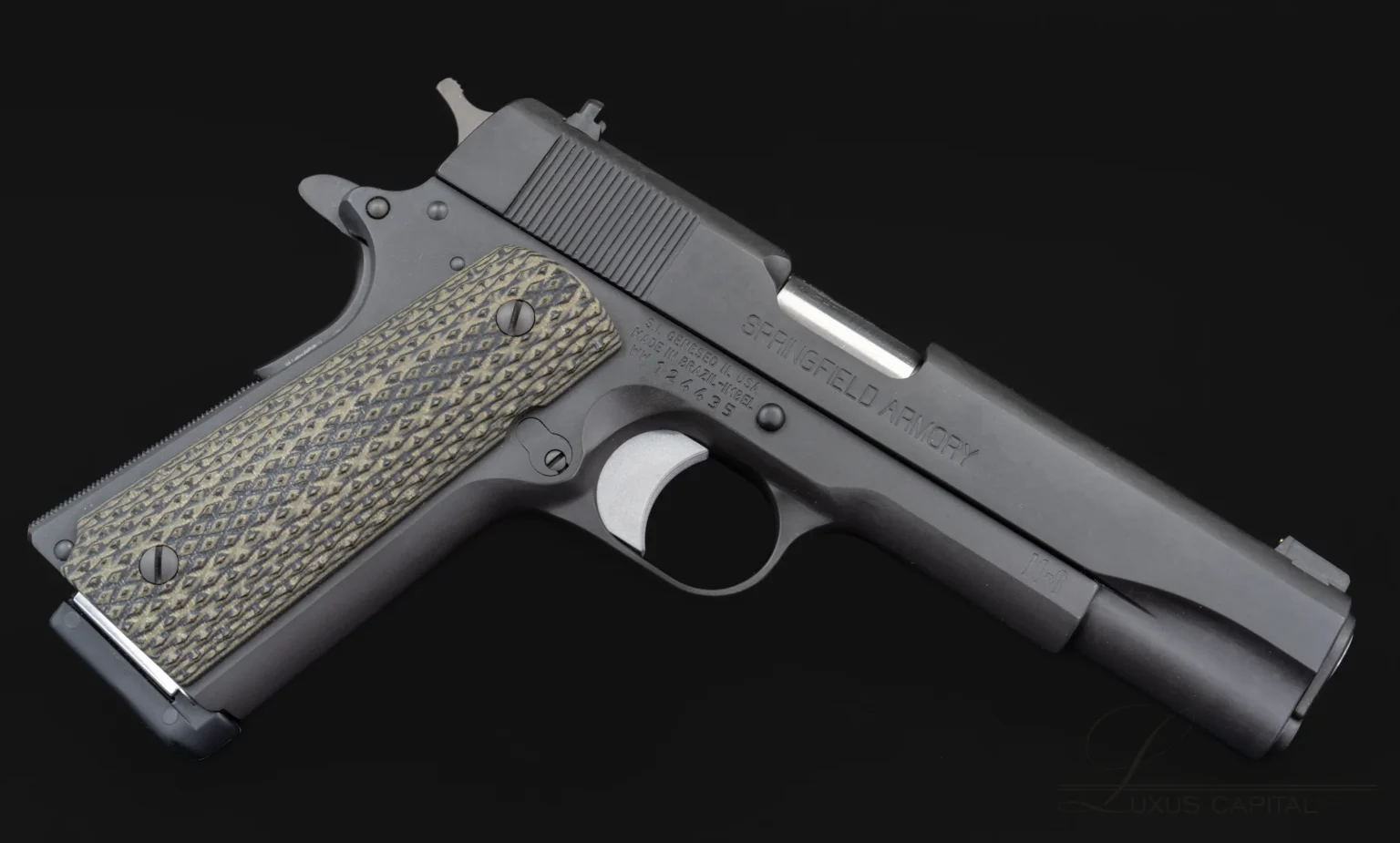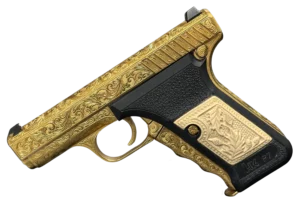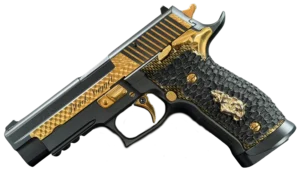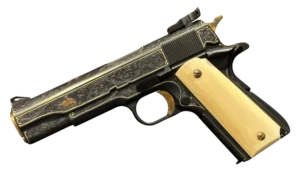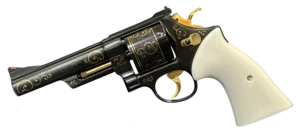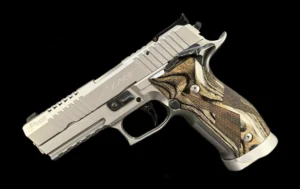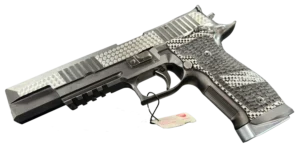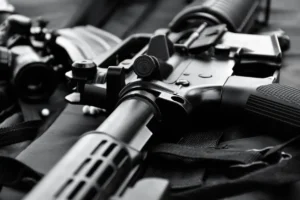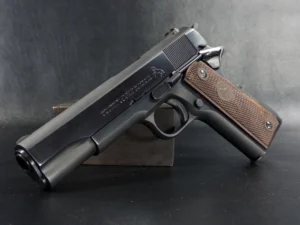Key Takeaways:
- Springfield isn’t just making guns — it’s telling a story: From muskets in the Revolutionary War to polymer pistols with red dots today, Springfield Armory has been there, shaping what American firearms look and feel like. It’s not just a manufacturer; it’s a thread running through the country’s history.
- The legacy models still hit hard — and the new stuff isn’t playing around either: The 1911? Still a beast. The M1 Garand? Straight-up legend. But Springfield’s not stuck in the past. The XD series, XD-M, and Hellcat show they’ve got both feet planted in the now, offering reliability, smart design, and the kind of practicality real shooters care about.
- Heritage doesn’t mean stuck in time, and Springfield gets that: What makes Springfield special isn’t just its age. It’s the way it honors where it came from while still pushing forward — blending craftsmanship with innovation, history with utility. It’s walking that line, and doing it with a lot of grit and very little flash.
Let’s get one thing straight: when people talk about “American gun heritage,” they’re usually talking about more than just hardware. They’re talking about the stories, the grit, the weird turns of history — and somewhere near the center of all that sits the Springfield Armory.
Not the touristy one with velvet ropes and museum lighting (though that has its place), but the beating heart of the brand. The workshop. The proving ground. The thing that’s been making, refining, and reimagining firearms in this country since, well, before the country even properly existed.
It started in 1777 — in the thick of the Revolutionary War — and it’s still here. That alone is kind of wild. Through centuries of wars, political shifts, tech leaps, and culture wars, Springfield has managed to not only stick around, but shape how Americans build and think about guns. So yeah, there’s a story here. And it’s a good one.
Roots in Revolution: How It All Began
Back in 1777, while most of the world was watching redcoats and rebels duke it out, the U.S. Congress made a move that didn’t get much press at the time — they established the Springfield Armory in Massachusetts. They needed a place to make muskets and cartridges, sure. But more than that, they needed consistency.
Funny thing is, that drive for uniformity—every part interchangeable, every rifle fixable on the fly—ended up revolutionizing more than just weaponry. It basically kickstarted the whole idea of American industrial manufacturing.
For decades, the Armory was government-run. It cranked out firearms for every major American conflict and quietly set the standard for precision engineering. And then, in 1974, just like that, it shut down as a government arsenal.
But the story didn’t end there.
A private family picked up the Springfield name, and instead of turning it into a branding gimmick, they actually honored the legacy. They kept building guns—damn good ones. And that pivot? It opened the door to civilian markets, competitive shooting, personal defense. A whole new chapter.
The M1 Garand: “The Greatest Battle Implement Ever Devised”
That quote? It’s from Patton. And say what you will about the man, but he had a flair for drama—and good taste in rifles.
The M1 Garand was Springfield’s magnum opus during World War II. A semi-auto rifle that absolutely changed the game. No more fumbling with bolt actions while getting shot at. The Garand gave soldiers real firepower, real speed. And reliability? Off the charts.
You’ve probably seen one in a movie—even if you didn’t realize it. The eight-round clip, the satisfying ping when it ejects. It’s the sound of American firepower leveling up.
After WWII, as the battlefield quieted down, Springfield didn’t. The Garand’s success helped the brand pivot into the civilian world, bringing that same sense of dependability into everyday hands. People trusted it, not because of flashy ads or buzzwords—but because their dads or uncles or grandfathers swore by it.
It wasn’t just a gun. It was a bond.
Enter the Icon: The Springfield 1911
Alright, here’s where things get personal for a lot of folks. If you’ve ever shot a 1911, you know—it’s not just another handgun. It’s a damn legend.
Originally designed by John Browning (a name you should absolutely know), the 1911 was adopted by the U.S. military in, well, 1911. And it stuck around through two world wars, Korea, Vietnam. It’s still going strong today, over a century later. That kind of staying power doesn’t happen by accident.
Springfield took the 1911 blueprint and did something pretty rare: they improved it without ruining it. Modern touches, sure—extended safeties, fiber-optic sights, custom finishes. But the soul? Still intact.
Most standard Springfield 1911s stick to that classic .45 ACP setup. Solid steel frame, five-inch barrel, single-action trigger that breaks like glass. It’s the kind of gun that rewards good form and punishes sloppy handling—which is probably why competitive shooters love it.
You’ll see them everywhere from USPSA matches to bedside nightstands. And even though the world’s drowning in polymer-framed striker-fired pistols these days, there’s still something about a 1911 that just feels… right. Like shaking hands with history.
Modern Muscle: XD, XD-M, and Hellcat
Let’s be honest—nostalgia’s cool, but it doesn’t win in the real world if the gear can’t keep up. Springfield got that. So while they kept the legacy stuff alive, they also looked forward.
Enter the XD series.
If the 1911 is the old-school muscle car, the XD is the tuned-up daily driver that still punches way above its weight. Reliable, accurate, and loaded with safety features that make sense—grip safety, trigger safety, firing pin block. Nothing you don’t need, everything you do.
Then there’s the XD-M line. That “M” stands for “Match,” and it shows. Match-grade barrels, interchangeable backstraps, improved trigger feel. It’s Springfield’s way of saying, “We can do precision too.”
And now? Meet the Hellcat.
The Hellcat is Springfield’s answer to the modern carry gun dilemma: How do you fit more rounds into a smaller package without making it unshootable?
Somehow, they pulled it off. You get 11+1 or 13+1 capacity in something smaller than most subcompacts. It points fast, shoots straight, and it’s tough as nails. Whether you’re carrying IWB in shorts and a t-shirt or tossing it in a glovebox, the Hellcat just works.
What Makes a Springfield… a Springfield?
Look, a lot of companies make guns. Some are good. Some are hyped. Springfield Armory? It’s got a vibe.
Part of it’s the build quality—tight tolerances, quality materials, and the kind of finish work that doesn’t cut corners. Part of it’s the consistency. You don’t get surprises with these guns. They do what they’re supposed to, every time.
But there’s also a kind of… integrity? Sounds corny, maybe, but it’s real.
Springfield doesn’t churn out flavor-of-the-month gimmicks. They focus on getting the basics right. Ergonomics that make sense. Safeties that don’t get in the way. Grips that actually fit real human hands, not just mannequins.
Customization is big too. Want fiber optics? Night sights? Fancy Cerakote? It’s there. Prefer old-school wood grips or skeletonized triggers? Go nuts. They know gun people are picky, and they lean into that.
And here’s something else—they get that not everyone’s a seasoned shooter. Their newer guns, especially the Hellcat and the XD lines, have intuitive controls and just enough built-in safety to build confidence without dumbing things down. Smart move.
The Cultural Weight of a Name
Springfield isn’t just a logo stamped on a slide. It’s a name that carries weight.
Ask any gun person about it and you’ll get something like: “Oh yeah, those are solid.” Which is honestly the highest praise in this world. Flash comes and goes. Solid sticks.
You’ll see Springfield Armory pop up in movies, on the hip of a detective in a crime show, or in the hands of a competitive shooter winning matches on YouTube. It’s not always center stage—but it’s always there.
More than that, Springfield’s a part of the ongoing American conversation about guns. Responsibility. Rights. Regulation. It doesn’t duck the tough stuff. And when it speaks up—on legislation, on ownership, on training—it does so from a place of history and credibility.
Which, let’s face it, not every manufacturer can say.
Keeping the Story Alive: Museums, History, and Education
Now here’s something that tends to fly under the radar—Springfield’s dedication to preserving history.
There’s a physical Springfield Armory National Historic Site in Massachusetts (yeah, the original one). It’s got exhibits, artifacts, and records going back to the 18th century. Total goldmine for history buffs or anyone who wants to understand how America learned to build things at scale.
The modern company doesn’t shy away from this heritage either. They’re involved in educational outreach, training programs, and shooting sports. Not in a weird, corporate-sponsorship kind of way—but more like: “Hey, here’s why this matters. Here’s how you do it right.”
That kind of stewardship? It matters, especially in a world that sometimes treats firearms like either sacred objects or public enemies. Springfield stays grounded. Balanced.
Tradition Meets Tech: Where Springfield Is Headed
So, where does Springfield go from here?
Well, they’re not standing still. While other companies are still figuring out how to make striker-fired guns feel less like toy guns, Springfield’s dropping models with red dot slides right out of the box. They’re embracing optics, modular frames, and suppressor-ready barrels.
But they’re doing it their way—without losing the feel. That thing you notice when you pick up a Springfield and think, “Yeah, this feels legit.” That’s still there.
They’re investing in new materials, new production methods, smarter tooling. But they haven’t forgotten what got them here: craftsmanship. Real machining. Human hands. Pride.
Wrapping It All Up (Kind Of)
The truth is, you don’t stick around for 250+ years by accident. Springfield Armory isn’t just part of the American gun story — it is the story. Or at least a big, loud, steel-and-wood chunk of it.
From muskets in the Revolution to match-grade polymer pistols, they’ve built tools that helped shape everything from global conflicts to weekend matches at the local range.
And while the world’s changing—fast—they’ve figured out how to walk the line between old-school values and new-school demands. It’s not perfect. It’s not supposed to be. But it’s honest.
So whether you’re just getting into shooting, looking to upgrade, or diving deep into the history of how we got here, Springfield’s worth paying attention to.
Because heritage isn’t just about where you’ve been.
It’s also about where you’re willing to go next.
Frequently Asked Questions
Springfield is recognized for its significant contribution to American firearm history, particularly for manufacturing weapons used by the U.S. military, including the M1 Garand, M14 rifle, and 1911 pistols. The company also produces modern firearms like the Hellcat, SA-35, and XD series.
Springfield Armory was founded in 1777, during the American Revolutionary War, and quickly became the nation’s primary armory for over a century until its decommissioning in 1968. In 1974, the modern Springfield Armory brand was revitalized, boldly continuing its legacy with cutting-edge firearm innovations.
Its guns are known for reliability, precision, and ergonomic designs, making them popular for personal defense, competition shooting, and law enforcement.
Some of the most iconic guns include the M1 Garand, the M14 rifle, the 1911 pistol, and the modern Hellcat micro-compact pistol, renowned for its concealability and high magazine capacity.


